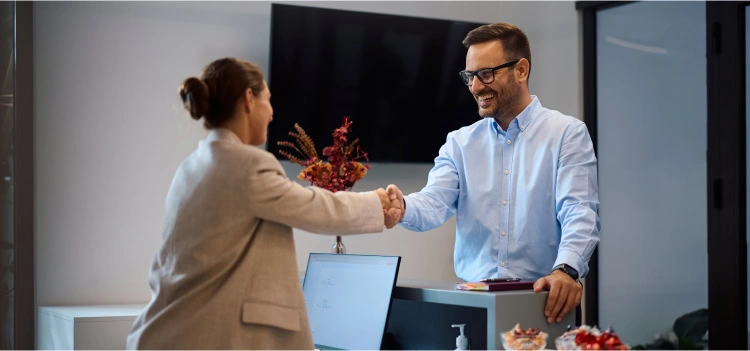It has become increasingly difficult for e-commerce companies to keep up with rising consumer expectations. E-commerce companies must upgrade their technology regularly to provide customers with real omnichannel experiences and reach. A one-size-fits-all solution is no longer enough to manage an eCommerce business. Fortunately, a solution to this problem has emerged in composable commerce. Even though legacy systems are self-sufficient, they are never good enough to fulfill the increasing needs of both markets and customers. Architectures that are too inflexible and prescriptive make it difficult for companies to keep up with the ever-changing demands of customers across different digital channels.

Composable commerce may be defined as
Composable Commerce uses pre-packaged business capabilities to create an e-commerce platform (PBCs). Software components that represent certain business capabilities are known as PBCs.
One can combine various commerce components to create a unique application tailored to a company’s specific needs. This is what Composable Commerce does.
It is common for PBCs to be a third-party software component, but they can also be part of the program itself. A checkout or a search engine are ideal examples of PBC. It is possible to use a variety of suppliers to create a custom solution for a specific business problem.
Composable commerce’s benefits
-
Create a unique client experience from the ground up
Consumers’ preferred methods of interacting with brands have changed throughout time. Instead of shopping at brick-and-mortar businesses, they choose social media platforms, online marketplaces, and Internet of Things (IoT) gadgets. Consumers nowadays are interacting with companies in ways they never believed possible.
It’s no longer enough for corporations to just exist; they must now be able to wield their influence in an entirely new way. Today, revenues come from various sources, rather than just search and search-based advertising.

You must be adaptable and give a personalized shopping experience that pays off when considering all of these variables while developing the customer journey. When a business delivers tailored experiences, 80 percent of customers are more inclined to buy from them.
-
Reduce the cost of acquiring new customers.
You can’t only rely on sponsored advertising anymore because customers are becoming increasingly suspicious of it. A more adaptable approach to technology stacks has become necessary for many corporate brands due to the shift to content- or experience-driven commerce. Many organizations create content to post on their channels to combat escalating client acquisition expenses and improve the overall online user experience.
-
Avoid vendor lock-ins, which are common in the industry.
Monolithic software vendors have a limited range of customization options. Waiting till your contract expires or making a pricey move is your only option if you discover another much better product. If you choose a modular design, you may easily replace or switch out components that correspond with your company goals.
Composable commerce is an opportunity for tech-savvy players who want to break through the clutter while offering a superior customer experience at speed and scale. Delaying the transition from monolithic to agile architectures would make it difficult for businesses to remain competitive.
What is the difference between Composable Commerce and Traditional Commerce?
Businesses are no longer constrained to a single application suite. With no licensing limitations from a single vendor, they may experiment with the best innovative modular technologies. “Packaged business capacity” is the term used to describe the structure of this innovative new method.
“Software components that reflect a well-defined business capacity” is how Gartner, the world’s premier research firm, describes Packaged Business Capabilities. An end-to-end business service that the customer as a whole may consume is what the word refers to. To complete a task, it must be self-sufficient and not rely on other data or services. Larger app suites may be constructed from these business operations and then linked together via an API. Every business function included in the app is often a third-party software component.
In a monolithic app, diverse components from a single platform are merged into a single program. An eCommerce SaaS application would be a good illustration of this. Catalog services that provide product photos, ordering systems, payment mechanisms, and shipping services are examples of what may be included in such a system.
At first look, this appears to be quite handy because everything is contained within a single app. The sheer size of the monolithic codebase, on the other hand, adds an enormous amount of cognitive load on the developer. Thus, the development process is slowed down. Scaling a specific piece of the application (i.e., granular scaling) is not possible. Changing the product review module requires updating the entire system, not just one section. The built-in checkout may not support the payment choices we need, even though the monolithic program includes numerous functions.

Why Composable Commerce is a Good Idea
- Considerations of customer experience (CX) and total cost of ownership (TCO) of existing technology investments are often aligned around sustainability when business and technology leaders consider the evolution of technology stacks.
- Older commerce tech stacks are unscalable. When the market needs change, technology stacks that can’t use best-of-breed apps will be constrained in their ability to scale.
- There is a lot of reliance on IT and development resources in legacy commerce technology stacks. Facilitate technology component selection by business users and give the flexibility to tailor user experiences.
- Legacy technology stacks cannot meet CX and QA requirements. Because of their IT reliance, one can’t meet modern buyer journey needs with older commerce technology stacks.
- Put an end to the re-platforming of e-commerce. The total cost of ownership is an easy decision to make if you never have to replace an eCommerce platform. The architecture’s modular design allows for adding and removing components as needed.
Composable commerce appeals to B2B companies for a variety of reasons.
There is no single vendor that provides all of the features you need for your particular business and the ever-changing expectations of your customers. Integrations with current systems and best-of-breed PBCs and microservices were discouraged since traditional commerce platforms had more closely tied features and services as an all-in-one bundle.
Composable commerce minimizes the risk of purchasing basic out-of-the-box features and gives you greater control over the functionality and performance of your application.
Composable commerce is:
- It is possible to implement PBCs modularly, avoiding the risks associated with tightly coupled services and allowing for future module replacements.
- Cooperative commerce is based on open standards for integration patterns and extension models that make it easy to integrate with other systems.
- The adaptability of Composable commerce allows for new customers, methods, and markets to be accommodated.
- Business-focused: It’s possible to take complete control of the iteration and innovation process at reduced cost and risk for both businesses and development teams, thanks to the required tools and capabilities.
- Composable commerce allows firms to utilize and build just the features and functions they need to run their business. It is common for these applications to be lighter, quicker, and more adaptable. This development strategy allows you to effortlessly mix multiple best-of-breed components, from content management to payment processing, to work even faster and create a far greater experience.
For organizations, composable commerce allows them greater control over the delivery of their e-commerce application as consumer demands and the need for digital transformation continue to grow. The decoupled architecture makes it simple to manage e-commerce experiences across channels while ensuring that your application is future-proof.
The Future of Digital Experience is Composable
Headless technology has significantly impacted the customer experience, but it has a limited influence on the organization when implemented as a one-off project. Composable commerce enables businesses to be agile, speedy, and reliable at the infrastructure level.
In the long run, Composable commerce saves money through process optimization and flexibility by requiring more preparation upfront. Composable is the future digital experience because it allows you to manage the actual value of decoupled systems and develop best-in-class solutions for your company.
Subscribe to Saffron Tech
Explore your marketing zen with our newsletter! Subscribe now.



